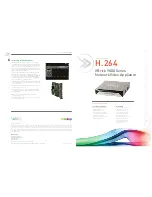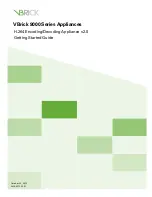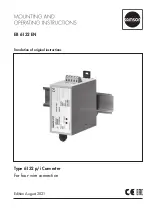
© 1990-2021 - All Rights Reserved - ECdesigns
https://www.ecdesigns.nl
/
5 16
PowerDAC-R
PAGE 1
DAC type
2 x 22 bit Fractal-7 discrete, switch & resistor-based multibit power converters
Digital input
1 x Toslink 16/24 bit: 44.1 kHz / 48 kHz / 88.2 kHz / 96 kHz / 176.4 kHz / 192 kHz
Power Supply
External 5V/200 mA,
included with PowerDAC-R
Standard 220V (option: 110V)
Power Consumption
Approx. 1.25 Watt
Power Supply Cable
USB type A-B, custom
blue
cable 2 wire low DC resistance,
included with PowerDAC-R
Output impedance
Remains 31.25 Ohms regardless of volume setting
Volume control
How do we control the volume? We use a combination of supply voltage programming
(3dB steps) and bit shifting (6dB steps). This way we can realise
lossless
volume control
with 27dB range.
This integrated volume control enables us to directly drive headphones and power
amps / bu
ff
ers without the need for a pre amp. Keep in mind that perfect pre amps
don't exist as there are no perfect parts, so adding a pre amp is going to add
noise, distortion and signal degrading no matter what. By simply eliminating the
pre amp we also eliminate all related degrading.
Output voltage
125mVpp ... 4 Vpp (44mV ... 1.4 V rms) Output voltage or fixed 4Vpp (1.4V rms) output
voltage (jumper setting)
Output
2 x RCA output, headphones can be connected through RCA to jack adapter cable.
Optional available as separate product:
RCA35
cable RCA to 3.5mm cable
PowerDAC-R and
headphones
The PowerDAC-R makes it possible to directly drive many headphones (32 Ohm and up)
without any analogue amplifier or bu
ff
er in the signal path. In other words the headphones
are directly driven by a balanced power supply, a number of digital on / o
ff
switches and a
resistor array. This eliminates all distortion and degrading that is typically introduced by
conventional headphone amplifiers. With this distortion and degrading completely
removed it is obvious that we end up with a much cleaner signal that lets one listen much
deeper into the recording and o
ff
ers a more realistic representation of the recorded music.
Bandwidth
Theoretically 100 MHz (based on switching speed)
Distortion
< 0.001% (0dB)
Technical specifications


































